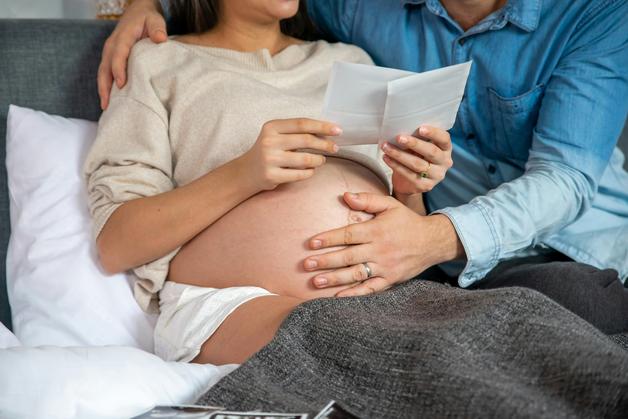Comfort, expectation, joy—pregnancy arrives with a swirl of sensations. Yet, as the weeks progress, another unexpected visitor often emerges: pelvic pain during pregnancy. It’s more than just a fleeting ache; it can cast a persistent shadow over daily life, transforming ordinary movements—walking, standing, even rolling over in bed—into calculated tasks. Sound familiar? Many parents find themselves questioning what’s normal, what’s concerning, and what can actually bring comfort amid this cascade of physical change. The reality: pelvic pain during pregnancy spans everything from subtle twinges to pronounced discomfort, and understanding the range of causes, signs, and management strategies empowers families to navigate these months with purpose and reassurance. Explore what lies behind pelvic discomfort, discover clear warning signals, and unveil practical, science-based approaches that prioritize your well-being—body and mind.
What Is Pelvic Pain During Pregnancy?
Pelvic pain during pregnancy refers to discomfort centered in the area between your hips and below your abdomen, sometimes stretching into your lower back, thighs, or groin. It might begin subtly: a vague sense of heaviness or tension, a pulling deep within. Over time, this sensation can shift. One moment, a sharp, fleeting pang when standing up; the next, a dull, stubborn ache after a busy afternoon. Hormones—especially relaxin and progesterone—initiate vast changes as they loosen ligaments and supporting pelvic structures, prepping for birth but also reducing joint stability. The result? A symphony of sensations that redefine what “normal” feels like, with up to eight out of ten pregnant individuals experiencing some form of pelvic discomfort as weeks go by.
Why Does Pelvic Pain Happen? Unpacking the Causes
Hormonal Shifts and Ligament Softening
Those pregnancy hormones work overtime. Relaxin and progesterone soften and stretch connective tissue, making way for growth and eventual delivery. Yet this welcome flexibility also means that pelvis joints become less stable—imagine the subtle shifting of tectonic plates—and this can easily translate into discomfort with movement. It’s not simply about pain, but about an altered baseline: standing on one leg, climbing stairs, or adjusting in bed may suddenly draw your attention to new vulnerable spots.
Weight Gain, Center of Gravity, and Posture
As the pregnancy progresses and the uterus grows, weight distribution shifts. Your center of gravity moves forward, pulling the spine and pelvic girdle into unfamiliar positions. This changing body map presses extra stress onto supporting muscles and ligaments. What follows might be a sense of dragging or tightness, particularly in the lower abdomen, hips, or pubic region—signals that mechanical factors are at play.
Pelvic Girdle Pain (PGP) & Symphysis Pubis Dysfunction (SPD)
Within the umbrella of pelvic pain during pregnancy, conditions like pelvic girdle pain (PGP) and symphysis pubis dysfunction (SPD) occupy a prominent place. Instability in the pelvic joints, accentuated by loosened ligaments and increased pressure, gives rise to symptoms: clicking, grinding, or stabbing sensations near the pubic bone or lower back, especially during weight-bearing activities.
Round Ligament Pain
These thin bands, running from the uterus to the groin, can cause sharp, brief pain—often compared to a fleeting electric zap—particularly with sudden movements, turning over in bed, coughing, or laughing. Round ligament pain stands out as one of the more “classic” signs, typically aggravating in the second trimester.
Other Triggers: Uterine Contractions, Digestive and Urinary Causes
Contractions, even those that aren’t labor-related (Braxton Hicks), can trigger tightness or cramping. Meanwhile, slower intestinal movement in pregnancy paves the way for constipation, adding yet another layer of pelvic discomfort. If a urinary tract infection (UTI) joins the fray—heralded by burning or increased frequency—pelvic pain may become sharper and more pronounced. Always keep in mind: pain that’s sudden, persistent, or paired with symptoms like bleeding or fever demands prompt care.
Rare and Serious Origins
On rare occasions, pelvic pain during pregnancy stems from urgent complications such as ectopic pregnancy, miscarriage, or ovarian torsion. These typically broadcast their urgency through intense pain, possibly accompanied by vaginal bleeding, fever, or a sudden feeling of unwellness—a scenario that should trigger immediate contact with your healthcare provider.
Where and How Does Pelvic Pain Manifest?
The pelvic region is a crossroads, and pain can cluster in many areas—front of the pubic bone, lower back, hips, groin, or even the buttocks and thighs. Nerve signals blend, creating diverse experiences: throbbing, burning, grinding, or a deep, nagging ache. Sometimes, a sense of heaviness or pressure hints at underlying muscle fatigue or overworked ligaments.
Specific movements often act as triggers:
- Walking, especially over uneven ground
- Climbing stairs or stepping over objects
- Transitioning from sitting to standing
- Rolling over at night or standing on one leg
Sharp pains, clicks, or a grinding sensation in the joint region may appear abruptly, catching you unawares in the middle of otherwise mundane routines. But what about warning signs?
When To Worry: Red Flags and When to Seek Help
Not every ache should spark alarm, but certain signals require immediate evaluation:
- Sudden or relentless pain, especially if rest brings no relief
- Bleeding, fever, chills, or flu-like symptoms
- Cloudy or strong-smelling urine; pain or burning with urination
- Pain radiating down the legs or into the back, paired with numbness or weakness
- Severe dizziness, vomiting, or feeling faint
Quickly jotting down when pain appears, how long it lasts, and whether it radiates helps healthcare teams home in on the cause without delay.
Who Is Most at Risk?
While pelvic pain during pregnancy is widespread, certain parents face greater odds:
- History of pelvic or back pain, past injuries, or multiple pregnancies
- Higher BMI, joint hypermobility (joints that move beyond the normal range)
- Demanding physical activities or heavy lifting
- Advanced age, tobacco use, or previous pelvic surgery
Medical history—especially previous infections or underlying anatomical differences—can also tip the balance toward earlier or more intense symptoms. The interplay of these factors shapes not just the presence but the type and severity of pelvic discomfort experienced.
How Professionals Diagnose Pelvic Pain
Assessment always begins with listening. Your healthcare provider will discuss the history, ask about timing, triggers, radiation of pain, and associated symptoms. A gentle physical examination checks for tenderness, swelling, or altered movement. Blood and urine tests may follow, hunting for infection or inflammation as contributing factors.
Imaging, especially pelvic ultrasound, gives a clear, safe picture of the uterus, ovaries, and surrounding structures, confirming the pregnancy location and ruling out rare but dangerous conditions like ectopic pregnancy or ovarian torsion. MRI may also enter the scene if symptoms persist or suspicion remains high—both are safe in pregnancy and avoid ionizing radiation.
Powerful, Lived-In Strategies for Relief
Lifestyle Tweaks That Make a Difference
- Divide bigger tasks into smaller chunks; alternate activity periods with rest for a gentler rhythm.
- Sleep on your left side, nestling a pillow between the knees to ease pelvic and lower back strain.
- Avoid heavy lifting, and choose careful, ergonomic movements—bend at the knees, keep your back aligned.
- Supportive, cushioned, low-heeled shoes stabilize alignment.
- Try a pregnancy support belt or ergonomic seating to reinforce weak points and promote optimal posture.
Exercise and Movement: Friend, Not Foe
Gentle walking, targeted stretching, prenatal yoga, and pelvic floor muscle training (Kegels) can deliver measurable relief. In some cases, a physical therapist with expertise in maternal health curates individualized routines that enhance stability and diminish pressure on affected joints. Note: overexertion is counterproductive; moderation and specific targeting are the keys.
Pain Relief Options: A Multifaceted Toolbox
- Acetaminophen (paracetamol) is generally seen as safe for occasional use, but always under professional guidance.
- Warmth, whether through a hot water bottle or a soothing bath, melts away muscle tension.
- Carefully applied osteopathy, chiropractic, or acupuncture—when recommended by your provider—add another layer to the pain management arsenal.
- Simple aids, from a rolled towel to a firm pillow, create gentle separation and relief when sitting or lying down.
Resist the temptation for easily accessible painkillers: self-medicating without medical input risks missing deeper problems or using substances not advised during pregnancy.
Preventive Care: Building a Foundation Before Pain Escalates
Prioritize steady, sustainable habits:
- Engage in regular, low-impact physical activity such as swimming or stretching to maintain core muscle strength.
- Adjust activities as pregnancy progresses, being mindful of physical limitations that evolve week by week.
- Correct posture frequently; small adaptations (such as adjusting workspace ergonomics) yield ongoing benefits.
- Consistent, gentle movement paired with restful sleep lays a groundwork that reduces both risk and symptom intensity.
Pelvic Pain and Childbirth: Planning for Comfort
Labor is its own journey, and those grappling with pelvic pain during pregnancy can take steps to ease pressure in the delivery room:
- Explore upright, side-lying, or hands-and-knees birthing positions, which reduce direct load on the pelvis.
- Water birth, supported by the buoyancy of warm water, is sometimes an option—further reducing pelvic strain and enhancing relaxation.
- Birthing balls offer active sitting and gentle movement, shifting pressure and encouraging optimal fetal positioning.
Pain management is highly individual, ranging from breathing, massage, and partner support to medical measures like epidurals—open conversations with maternity staff pave the way for tailored strategies that support both comfort and safe delivery.
Emotional Impact: Recognizing the Mental Load
Physical pain rarely travels alone. Sleep disturbances, curtailed mobility, and the unpredictability of symptoms can erode patience and sap emotional reserves. Frustration, sadness, and self-doubt are common companions—these feelings, while taxing, are not signs of failure. Connection—whether through clinical teams, counseling, or friendship circles—raises spirits, offers coping tools, and reminds parents that support is tangible.
Practical Coping: Making Daily Life Work for You
Adjusting your rhythm makes a world of difference:
- Break routines into manageable segments. Pause for short rests and celebrate small victories.
- Lean on tools that offer extra comfort: belts, supportive shoes, thoughtfully placed pillows.
- Accepting and requesting help—be it for chores, childcare, or errands—is a show of wisdom, not weakness. Sharing the load builds resilience and preserves physical and emotional reserves for the road ahead.
Key Takeaways
- Pelvic pain during pregnancy weaves its way into most pregnancies, shaped by hormones, ligament changes, physical adaptations, digestion, and urinary health.
- Timely, thorough medical review distinguishes ordinary symptoms from signals that require urgent attention—especially when pain is sudden, intractable, or coupled with concerning symptoms.
- Comfort comes from layered strategies: lifestyle adaptations, guided exercise, tailored ergonomic aids, careful use of medications and complementary therapies.
- Recognizing warning signs and being proactive in seeking help empower families to respond with clarity and confidence.
- Pregnancy healthcare isn’t a solitary venture: teams of midwives, obstetricians, and general practitioners deliver individualized care and reassurance throughout pregnancy.
- Emotional wellbeing matters as much as physical comfort—professional and community support networks are there to lift, guide, and encourage.
- For accessible, reliable resources on pregnancy and child health—including personalized advice and free health questionnaires—consider downloading the Heloa app.
No question is too small, no discomfort trivial. By embracing both information and resources, parents lay healthy, nurturing foundations for themselves and their growing families.
Questions Parents Ask
Why does pelvic pain tend to get worse at night during pregnancy?
Many parents notice that their pelvic pain intensifies as evening approaches or when lying down to rest. This increase can be related to several factors: fatigue accumulated throughout the day, changes in sleeping position, and the persistent pressure of the growing baby on the pelvis. As your muscles and ligaments tire, it’s natural to feel more discomfort at night. Some find that using a firm pillow between the knees or adjusting their sleeping position provides a bit more support and helps ease the discomfort. Rassurez-vous, these nighttime aches are common—though sometimes challenging—during pregnancy.
Are there safe ways to relieve pelvic pain at home during pregnancy?
Absolutely, and many parents benefit from simple, gentle approaches to ease pelvic tension. You can try warm baths, placing a heating pad (on a low setting) on sore areas, or wearing a pelvic support belt for extra stability. Gentle stretching and mindful posture adjustments throughout the day can also help distribute weight more comfortably. Listening to your body and resting when needed is essential. If a method brings you relief and feels safe, it can be a helpful part of your daily routine. Always feel free to check in with your healthcare professional before trying new remedies to be sure they’re right for you.
When should you worry about pelvic pain during pregnancy?
Most pelvic discomfort is a normal part of the body’s adaptation, but certain situations require more attention. If you notice pain that is severe, persistent, or keeps getting worse; or pain paired with bleeding, fever, chills, or a burning sensation when urinating, it’s important to seek medical advice quickly. These could be signs that need prompt evaluation to ensure your wellbeing and that of your baby. N’hésitez pas à consulter votre professionnel de santé si vous êtes inquiète—il est toujours préférable d’avoir un avis rassurant.
Further reading:









